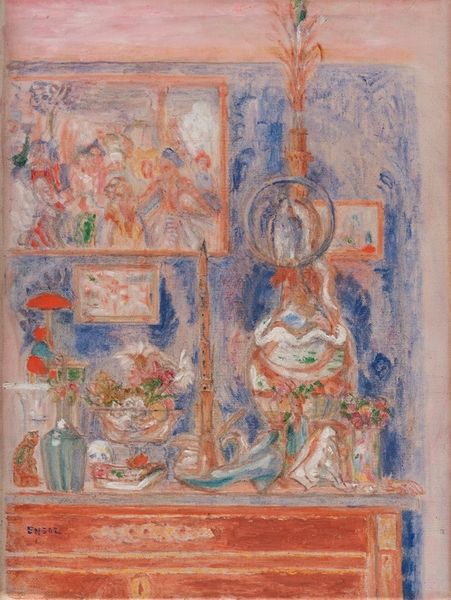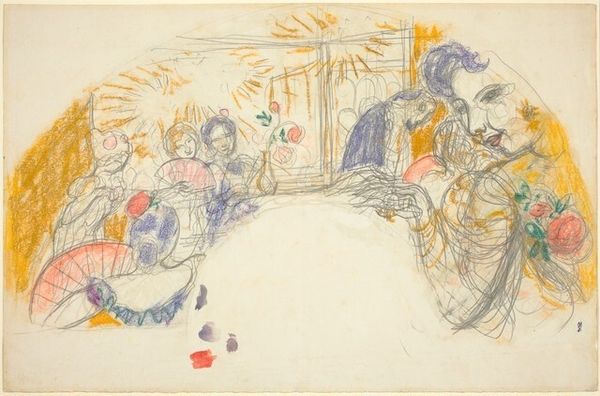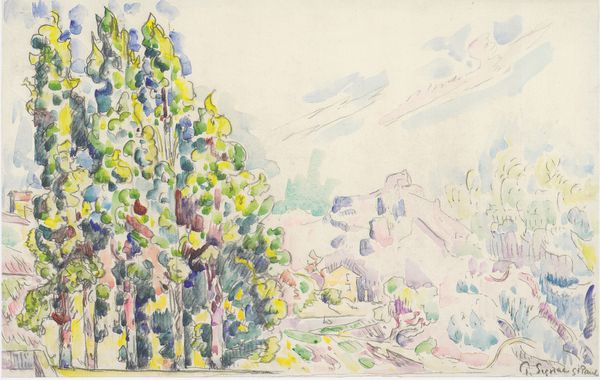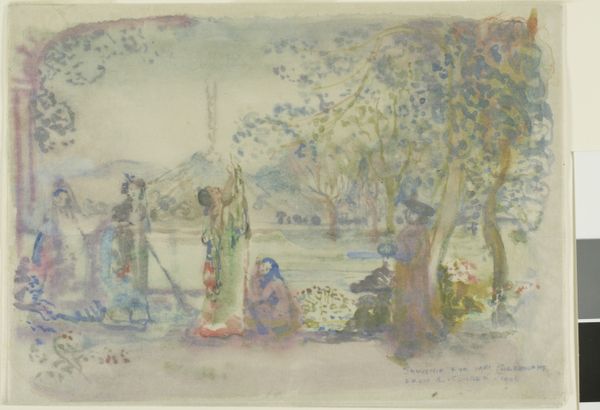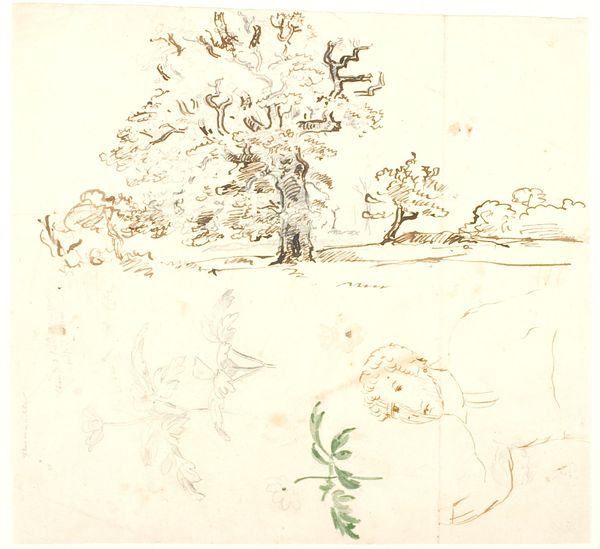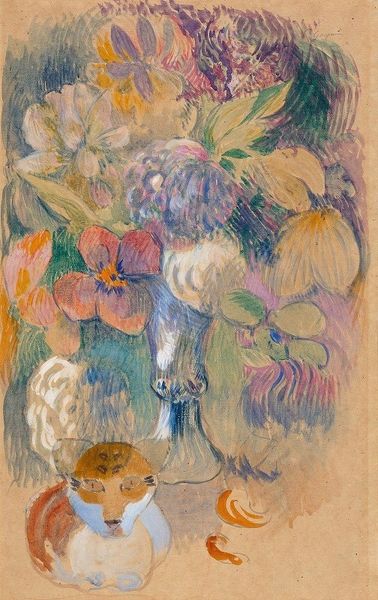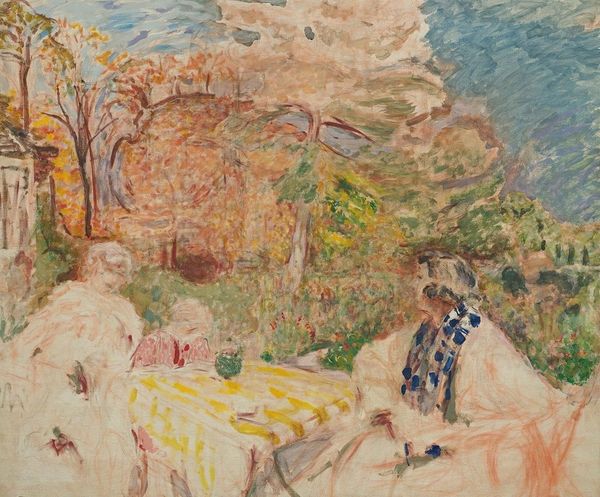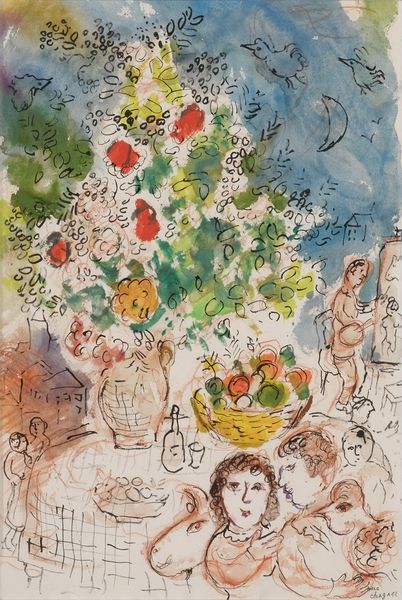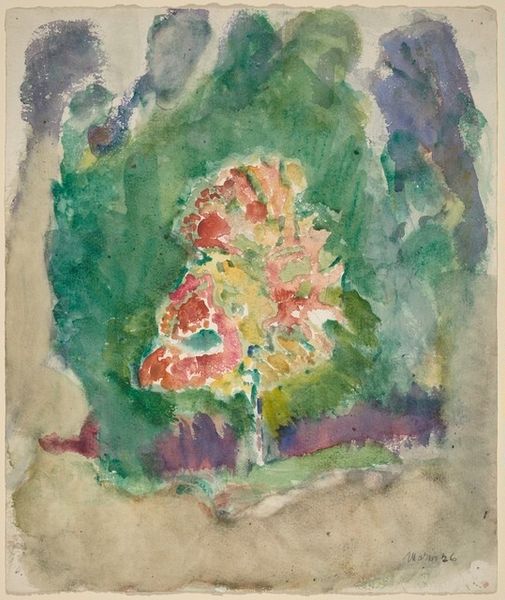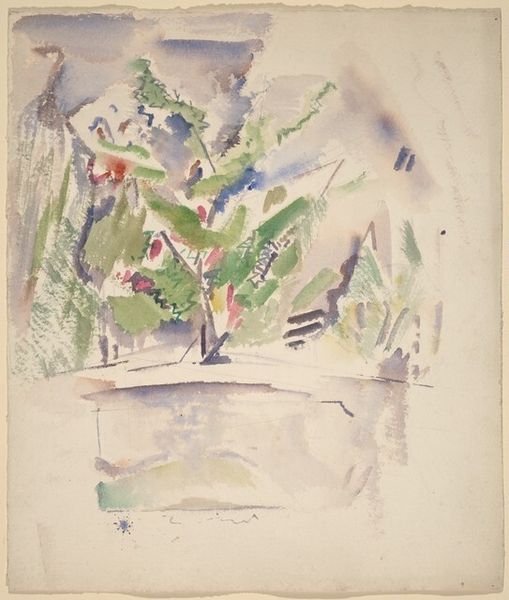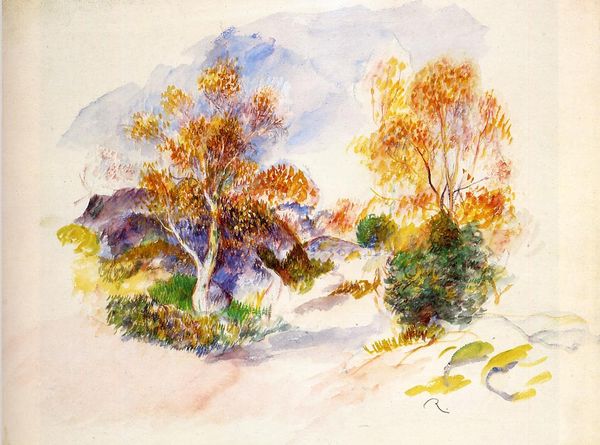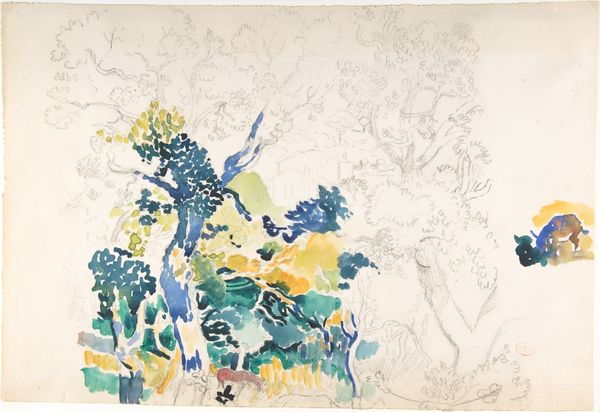
painting, plein-air, watercolor
#
portrait
#
figurative
#
painting
#
impressionism
#
plein-air
#
landscape
#
figuration
#
watercolor
#
post-impressionism
#
watercolor
Copyright: Public Domain: Artvee
Editor: This is Renoir’s "Figures under a Tree," a watercolor from 1880-1882. It feels very loose and dreamy, like a memory fading at the edges. What's your interpretation of this work? Curator: As a materialist, I’m drawn to the labor and processes evident here. Look at the watercolor technique itself – the way Renoir allows the pigments to bleed and mingle. This isn't just about depicting figures; it’s about the very act of applying paint to paper. How does this spontaneity speak to the social context of art production at the time? Editor: Well, it seems very different from the highly polished academic paintings that were still popular then. Was Renoir pushing back against that in some way? Curator: Precisely! This loose handling of the watercolor medium democratizes the art-making process. Watercolor was often considered a less ‘serious’ medium, linked more to leisure and sketching than finished, ‘high art’ pieces. What implications might Renoir's choice have for the traditional art hierarchy? Editor: I see what you mean. By embracing the immediacy of watercolor, he’s questioning those established boundaries, almost making art more accessible. So the material itself becomes a statement. Curator: Exactly. Consider the role of leisure too; the figures seem at rest, perhaps suggesting a specific class position. The “how” of the making shapes the “what” of its message, wouldn't you agree? Editor: Definitely. I always focused on the impressionistic style, but now I see how the medium itself and the act of painting play a significant role. Curator: It’s about moving beyond just subject matter, and investigating art as a product of material conditions, challenging accepted definitions of both labor and leisure.
Comments
No comments
Be the first to comment and join the conversation on the ultimate creative platform.
